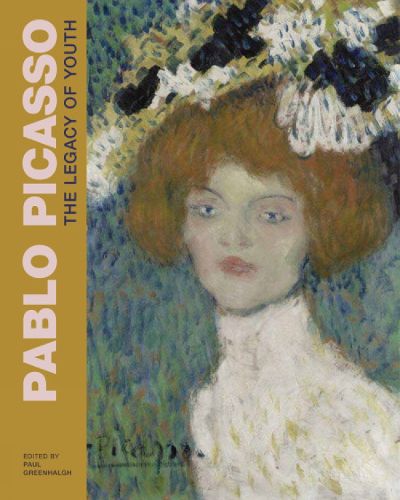Readings Newsletter
Become a Readings Member to make your shopping experience even easier.
Sign in or sign up for free!
You’re not far away from qualifying for FREE standard shipping within Australia
You’ve qualified for FREE standard shipping within Australia
The cart is loading…






This book reveals that Pablo Picasso wasn’t simply a figurehead of the Modern Age. He grew up in the 19th century: the extraordinary mixture of values that was fin de siecle Europe penetrated deep into his personality, remaining with him through his life. While he was the quintessential Modern in so many ways, he was also a Victorian, and this duality explains the complexity of his genius. He was simultaneously looking forwards and backwards, and feeding off the efforts of others, before developing his own idioms for depicting the contemporary world. The young artist recognised that society was increasingly in a process of transformation, not in a transitory or temporary way, but permanently, under the inexorable pressures of modernisation. He realised that the emergence of Modern art through the last quarter of the century was a product of this transformation. Throughout his life, Picasso would feel the tension between modernity and the histories it replaced. He would also struggle with the role of the individual, and subjectivity, in this new environment. Each chapter shows how the young artist embraced successive styles at large in the art world of his time. By the age of 14 well capable of drawing in a highly competent Beaux Arts mode, he drew in a Classicist manner of redolent of Ingres, or early Degas. He then moved through various forms of Impressionism, Symbolism, and Post-Impressionism, before arriving in his early twenties at his first wholly individual style, the Blue period, albeit that all these earlier sources were still evident. The Rose period followed, after which the artist began a truly seminal period of experimentation which culminated in the development of Cubism. By 1910, Cubism had become a fully mature vision, practiced by a wide range of artists. It was to provide the springboard for much Modern art across the disciplines, and it positioned Picasso as perhaps the single most important artist of the new century. AUTHORS: Paul Greenhalgh is the inaugural Director of the Zaha Hadid Foundation and former Director of the Sainsbury Centre. His most recent publications include ‘Ceramic, Art and Civilisation’ (Bloomsbury, 2020) and ‘Encounters with Ceramic: The Writings of Tony Birks’ (Sainsbury Centre for Visual Arts, 2021). John Onians is Professor Emeritus in the Department of Art History and World Art Studies at the University of East Anglia. He has taught at many institutions in France, the Netherlands and the USA and was first Director of Research and Academic Programs at the Clark Art Institute, Williamstown Mass. Recent publications include ‘Neuroarthistory. From Aristotle and Pliny to Baxandall and Zeki’ ( Yale, 2007) and ‘European Art. A Neuroarthistory’ ( Yale, 2016).
$9.00 standard shipping within Australia
FREE standard shipping within Australia for orders over $100.00
Express & International shipping calculated at checkout
This book reveals that Pablo Picasso wasn’t simply a figurehead of the Modern Age. He grew up in the 19th century: the extraordinary mixture of values that was fin de siecle Europe penetrated deep into his personality, remaining with him through his life. While he was the quintessential Modern in so many ways, he was also a Victorian, and this duality explains the complexity of his genius. He was simultaneously looking forwards and backwards, and feeding off the efforts of others, before developing his own idioms for depicting the contemporary world. The young artist recognised that society was increasingly in a process of transformation, not in a transitory or temporary way, but permanently, under the inexorable pressures of modernisation. He realised that the emergence of Modern art through the last quarter of the century was a product of this transformation. Throughout his life, Picasso would feel the tension between modernity and the histories it replaced. He would also struggle with the role of the individual, and subjectivity, in this new environment. Each chapter shows how the young artist embraced successive styles at large in the art world of his time. By the age of 14 well capable of drawing in a highly competent Beaux Arts mode, he drew in a Classicist manner of redolent of Ingres, or early Degas. He then moved through various forms of Impressionism, Symbolism, and Post-Impressionism, before arriving in his early twenties at his first wholly individual style, the Blue period, albeit that all these earlier sources were still evident. The Rose period followed, after which the artist began a truly seminal period of experimentation which culminated in the development of Cubism. By 1910, Cubism had become a fully mature vision, practiced by a wide range of artists. It was to provide the springboard for much Modern art across the disciplines, and it positioned Picasso as perhaps the single most important artist of the new century. AUTHORS: Paul Greenhalgh is the inaugural Director of the Zaha Hadid Foundation and former Director of the Sainsbury Centre. His most recent publications include ‘Ceramic, Art and Civilisation’ (Bloomsbury, 2020) and ‘Encounters with Ceramic: The Writings of Tony Birks’ (Sainsbury Centre for Visual Arts, 2021). John Onians is Professor Emeritus in the Department of Art History and World Art Studies at the University of East Anglia. He has taught at many institutions in France, the Netherlands and the USA and was first Director of Research and Academic Programs at the Clark Art Institute, Williamstown Mass. Recent publications include ‘Neuroarthistory. From Aristotle and Pliny to Baxandall and Zeki’ ( Yale, 2007) and ‘European Art. A Neuroarthistory’ ( Yale, 2016).